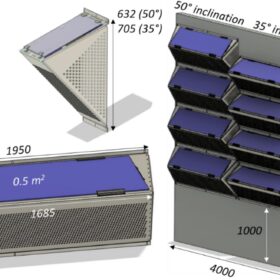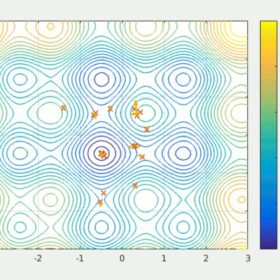New research estimates average long-term green hydrogen price at $32/MWh
New research from Norway has found that deploying around 140 GW of green hydrogen generation capacity by 2050 could make green hydrogen economically viable in Europe. Reaching this scale may help balance system costs effectively while increasing renewable integration, making green hydrogen a self-sustaining technology without subsidies, according to the scientists.
Photovoltaic noise barrier with ZigZag design
A Belgian-Dutch research group has designed a PV noise barrier that reportedly offers a good performance in terms of power yield, drivers’ safety and noise cancellation. Its payback time was estimated at between 6 and 10 years.
New grid forming strategy for solar batteries
A group of scientists from a major Chinese grid operator have proposed to use an enhanced version of the particle swarm optimization algorithm to adjust inertia and damping coefficients in batteries linked to PV systems. Their approach was validated through a series of simulation and was found to enhance transient performance.
Japanese scientists build stretchable organic solar cell with 14.2% efficiency
Researchers in Japan have built a stretchable organic solar cell than can ensure high efficiency levels while preventing crack initiation and propagation. The cell was built with a hole transport layer based on PEDOT:PSS treated with a new additive type.
UK startup launches AI air-source residential heat pump
UK-based Wondrwall says its new heat pump has a coefficient of performance of up to 4.99, with an inlet-outlet temperature of 30 C to 35 C. The system is based on the company’s AI-powered Home Energy Management System (HEMS) to efficiently manage household energy flows.
GoodWe launches residential solar carport
GoodWe has developed a residential solar carport that features its Polaris building-integrated PV (BIPV) panels. The carport, which is available in 4.8 kW and 8.0 kW variants, is designed to host one or two vehicles, respectively.
Perovskite-silicon tandem solar cell based on copper(I) thiocyanate achieves 31.46% efficiency
A Saudi-Chinese research team has fabricated a perovskite-silicon tandem solar cell without a hole transport layer (HTL) in the perovskite top cell. This innovative strategy, based on the co-deposition of copper(I) thiocyanate and perovskite in the top cell absorber, was intended at solving typical issues of HTLs in tandem devices.
What happens when malware hits PV systems
A random malware variant affected about 800 remote monitoring devices at ground-mounted PV plants in Japan in May 2024. Tokyo-based cybersecurity firm Girasol Energy has told pv magazine what happened and how PV asset owners can protect themselves against such incidents.
New testing method for solar water pumps
An international research group has proposed a low-cost testing methodology for solar water pumping systems that can reportedly improve water access in developing countries. The novel approach enables ongoing borehole monitoring without additional fuel costs or interruptions to the water supply.
Italian startup offers green hydrogen generation, storage system for homes
Italian startup Hybitat Srl has developed a hydrogen production and storage system for long-term storage of surplus residential and commercial solar power. The system includes a main unit with an electrolyzer and fuel cell, as well as a storage unit with 3 kg of hydrogen capacity and 100 kWh of energy capacity.











